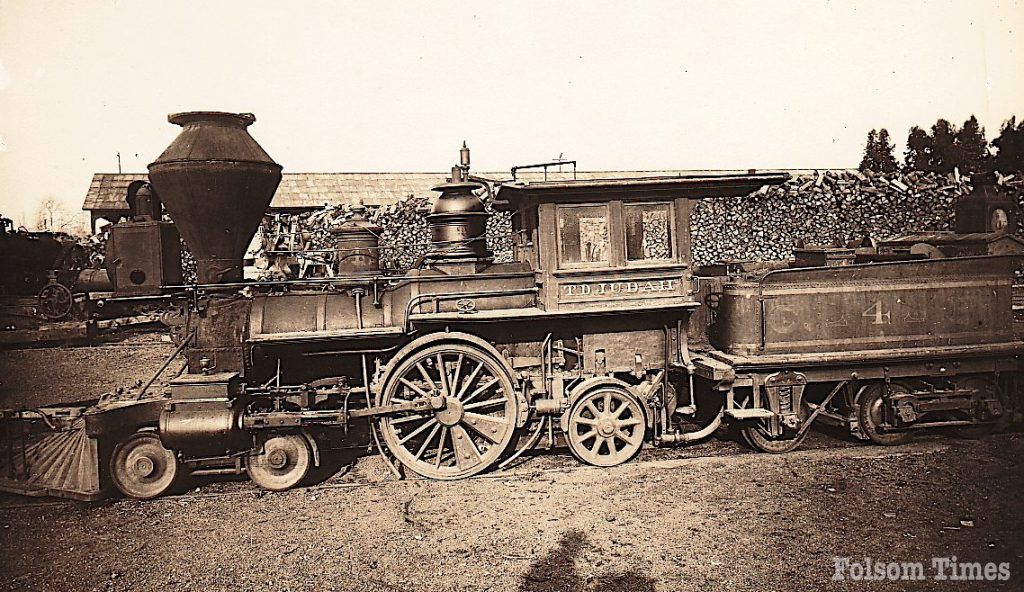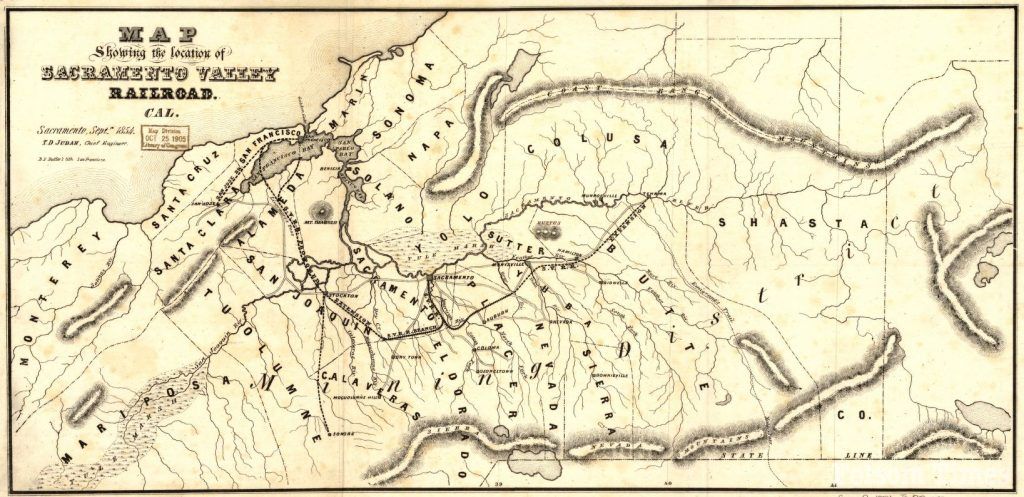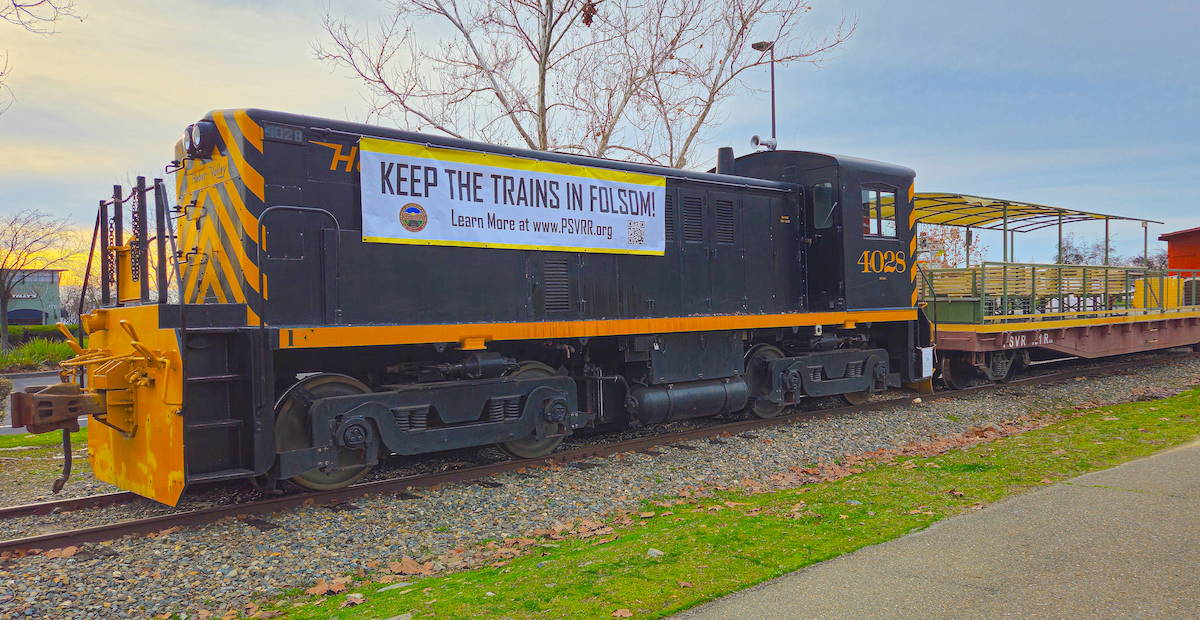Over the last two months, the leaders and many volunteers of the Placerville and Sacramento Valley Railroad (PSVRR) have been juggling a lot of uncertainty in regards to the future of their organization with the looming renewal of their operating license. After Tuesday night’s Folsom City Council, the local non-profit group is breathing a sigh of relief and has been assured their role in the community is an important one.
Before a near-full City Hall chambers, members of the Folsom City Council unanimously voted to recommend an operating license renewal of a seven year term to the PSVRR. The renewal is ultimately issued by the Sacramento Placerville Transportation Corridor Joint Powers Authority (JPA), which included the City of Folsom, Sacramento County, El Dorado County and Sacramento Regional Transit.
The PSVRR rail excursions for the public take place on portions of the historic Southern Pacific Railroad’s “Placerville Branch.” The segment is described by the PSVRR as, “a scenic gem that has wound through Sacramento and El Dorado Counties for over 160 years.” The excursions are in addition to a number of shorter rail events that take place in the heart of the city as well, such as the annual Pumpkin Patch Flyer train, Santa’s Whistle Stop, and others, all of which are operational fundraisers for the 501 (c)3 non-profit organization. The shorter events are not subject to the operating license that was in question recently, but are not events in which the organization can operate on alone when it comes fundraising and finances in order to continue being self-sustained as they have been.
The operating license agreement addressed Tuesday, applies to the southern tracks used for the excursion tracks is is between the PSVRR, the Sacramento Placerville Transportation Corridor Joint Powers Authority (JPA), the public entity which owns the tracks and is made of member agencies including the City of Folsom, Sacramento County, El Dorado County and Regional Transit.
In the weeks prior to Tuesday’s meeting, the PSVRR has been actively reaching out to the public asking for support of their organization and its future. Their efforts paid off, not only with the strong attendance at City Hall that included nearly a dozen speakers, it came with numerous emails and letters to city leaders, local media and a number of social media posts sharing support for the group that strives to preserve the history of Folsom’s rails, in living fashion.
One of the speakers that stood out Tuesday was local resident Sherry Toutges. A 20-year Folsom resident, Toutges admitted when he she first came to Folsom she had very little interest in trains until her son took an interest when he was young and they began attending the various events. Today, Toutges and her son continue to volunteer with the PSVRR whenever possible. In doing so, she has seen what the historical attraction offers to others.
“It’s what makes Folsom unique,” she said. “The families that I have met up with during the different little excursions love the railroad, the kids and the parents. It’s nice to be able to provide to the community a small piece of our history. It’s short, its inexpensive, they don’t have to go to Sacramento they can come spend their money here in Folsom. In fact, many come here from Sacramento to enjoy it. I ask tonight that the council work with us as volunteers and support us.”
One of the key points in the discussion Tuesday night, as well as in the detailed staff report was the concern of the White Rock Road crossing. Currently, the crossing is a two-lane road that will one day become a four lane expressway. Concerns have risen over the need for that crossing once that construction is complete. Those concerns surround feasibility and funding when that time comes.
Folsom Vice Mayor Sarah Aquino has been very involved in the ongoing discussions regarding the PSVRR and the license agreement. Aquino has been active long before Tuesday’s meeting, answering questions and combatting rumor and misinformation on various forms of social media that suggested the city wants to eliminate the trains from inside the city in the future. After Tuesday’s meeting, council reassured many that was not the case.
“I am supportive of preserving and celebrating Folsom’s railroad history in a way that makes sense and is realistic,” Aquino explained prior to Tuesday’s meeting online. “As you probably know, a four lane expressway called the Capital Southeast Connector is planned to connect El Dorado County to Elk Grove. One of the sections that’s in Folsom has already been completed. The big questions that are prompting these discussions are as follows: Is it feasible to get an excursion train safely across/under/over the Connector when it’s fully built out?
Does spending tens of millions of taxpayer dollars on a grade separation (preferred by the CPUC) make fiscal sense? If not, is an at-grade crossing possible (requires CPUC approval)? If an at-grade crossing is acceptable to the CPUC, are the various public and private entities prepared to accept liability for having an at-grade crossing in the middle of a four lane expressway? Are there other options that would allow PSVRR to continue its excursion train without crossing the Connector such as running only north or south of it?”
Those many questions that Aquino had summarized well in recent weeks still remain. However, with the vote to award a seven year operating license to the PSVRR, they are questions that the city, the JPA and the organization can all work on ahead with the build out of White Rock road years ahead, and the agreement has an ‘out’ clause within it should anything change ahead in that fashion.
“I think in the short term it is possible for the PSVRR to continue to run from the Hampton Inn to Latrobe, provided that the JPA agrees with that,” Aquino added Tuesday night. “We do need to think long-term as far as getting over, under and across White Rock when it’s fully built out at the southeast as we will have to deal with that and the CPUC may not approve an at grade crossing, so we need to think about what will happen if they say no and be ready for those discussions.
In addition to the license renewal Tuesday, council was presented with three alternatives for the PSVRR operating area to consider for the future. In their discussions, council made it clear that keeping the PSVRR operations in the heart of the city is essential, as opposed to moving it all south of White Rock Road.
“I want to touch on what one gentleman spoke on here tonight and is that when you start taking things away like the railroad, we sterilize the city and then we become like everywhere else and none of us that live here in Folsom moved here because Folsom was like everywhere else,” said Mayor Mike Koslowkski. “All of our terms here will end at some point on the Council, but like everybody that’s working on the railroad. We are running a relay race and the baton in this case is an irreplaceable asset. If we drop it, it will be gone forever.
As Tuesday’s vote to recommend the JPA issue a seven-year license renewal, City Hall erupted in applause and cheers as a topic that was drawing many tensions in recent weeks became something that can be a unified team effort for the future.
“I just want to thank all of you for listening to us here tonight,” said Chris Thull, development director of the PSVRR when he stepped up to address the council. “We just want to work together, we aren’t asking for money, we’re just wanting the support and just asking the city to work with us, talk to us, we can figure a lot of this out together.”
To learn more about the PSVRR and their future events nd history, visit www.psvrr.org.
Looking back: Railroad first arrived in the City of Folsom in 1856

Nearly everyone that spoke in regards to preserving the history of Folsom’s rails Tuesday night touched on the rich history of the railroad here. When it comes to Folsom and the railroad, there’s great significance it brought to the newly born city in 1856, not long after Folsom became a town, known once as Granite City.
While Joseph Folsom was busy tending to his legal and financial struggles in 1853, a group of Californians came together to build what was known as the Sacramento Valley Railroad just down the hill from Folsom.
The railroad was completed three years later, connecting Sacramento to the town that carried the name in Folsom’s honor, the same year Folsom’s newspaper hit the press.
Theodore Dehone Judah, the young engineer who would lay out the railroad and also survey the town of Folsom, was at the time working on the famed Niagara Gorge Railroad, universally regarded as a remarkable feat of engineering.
In 1854, Col. Charles L. Wilson, president of the fledgling California railroad organization, made a trip to the East Coast to purchase supplies.
While Wilson was there, New York Gov. Horation Seymour introduced him to Judah, who was eager to work in California for the railroad.
As early as 1832, the notion of a transcontinental railroad had been brought forth and by the time Wilson hired Judah, several bills for a “Pacific railroad” had been introduced to Congress.
Judah was an enthusiast for the project and, before leaving for California, made certain his views were known.
“The Pacific Railroad will be built,” Judah stated, “and I am going to have something to do with it.”
This must have been his major motivation for accepting Wilson’s offer for the Sacramento Valley Railroad.
The Niagara Gorgeline had secured Judah’s reputation as a top engineer and he certainly would not have crossed an entire continent for the sole purpose of designing a 20-mile line across a flat valley line.
So enthused was Judah, in fact, over a transcontinental route that this enthusiasm for the project and the lengths he went to see that it was properly accomplished earned him the nickname, “Crazy” Judah, in later years.
At any rate, he departed with his young wife for California and lost little time in getting the survey done.
On May 30, 1854, 15 days after he had started work, Judah issued a report on the preliminary survey and future business prospects of the Sacramento Valley Railroad.
Judah continued with the railroad until the trackage was completed to Folsom in February 1856.
When the laid-out railroad was well underway, Judah set himself up as a consulting engineer in Sacramento.
During this time, he also made several other railroad surveys, attended Congressional sessions in Washington to lobby for a transcontinental line, explored in the Sierras and, no doubt just as a bread-and-butter assignment from Captain Joseph Folsom, laid out the town of Folsom.
All of this time, Judah’s uppermost thought was the transcontinental line. He helped raise $46,500 in subscriptions in the little town of Dutch Flat for railroad surveys, then went to San Francisco to raise more money.

Financiers with heavy investments in stage lines, express companies and steamship lines turned him down, ridiculing him.
Judah persevered, only to be more bitterly disappointed once the railroad was under way in 1863.
The “Big Four” – Stanford, Huntington, Hopkins and Crocker – seemed to him to be concerned only with taking the largest profit with the least risk.
Appalled at their tactics in building “his” railroad, Judah in September 1863 left for the East Coast to raise the capital to buy them out. In Panama, he contracted yellow fever and died at age 37 shortly after his return to New York City.
After sitting dormant for decades, rail service today is a large part of Folsom. Regional Transit rolled into the city in October 2005 and continues today.
Through the years, Folsom has worked to preserve much of the history of the railroad in the city. In the heart of the historic district, the historic turntable stands next to a newly-constructed building that replicates the original Folsom Roundhouse. The building, designed by Bernau Development and the Historic Folsom Station, is home to Scott’s Seafood and Willamette Winworks.
When it comes to the rails today, the Placerville and Sacramento Valley Railroad continues to preserve the history of the rails in Folsom. The Placerville and Sacramento Valley Railroad is a nonprofit organization dedicated to protect, preserve and develop the Folsom-Placerville railroad right-of-way, celebrating its legacy through the creation and operation of a sustainable community heritage railroad for the benefit, use, education and enjoyment of the general public.




